The NAZCA LINES Designed by Aliens ?
The Nazca Lines /ˈnæzkɑː/ are a series of ancient geoglyphs in the Nazca Desert, in southern Peru. They were designated as a UNESCO World Heritage Site in 1994. The high, arid plateau stretches more than 80 km (50 mi) between the towns of Nazca and Palpa on the Pampas de Jumana, about 400 km south of Lima. Although some local geoglyphs resemble Paracas motifs, scholars believe the Nazca Lines were created by the Nazca culturebetween 500 B.C. and A.D. 500 The figures vary in complexity. Hundreds are simple lines and geometric shapes; more than 70 are zoomorphic designs of animals, such as birds, fish, llamas, jaguars, and monkeys, or human figures. Other designs include phytomorphic shapes, such as trees and flowers.
 |
| The Condor |
Because of its isolation and the dry, windless, stable climate of the plateau, the lines have mostly been naturally preserved. Extremely rare changes in weather may temporarily alter the general designs. As of 2012, the lines are said to have been deteriorating because of an influx of squatters inhabiting the lands.
Contrary to the popular belief that the lines and figures can be seen only with the aid of flight, they are visible from the surrounding foothills.
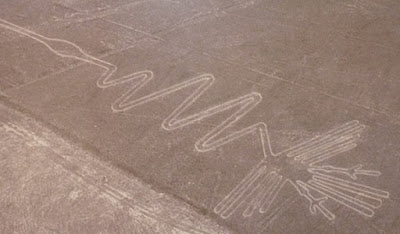 |
| The Heron |
Paul Kosok, a historian from Long Island University, is credited as the first scholar to seriously study the Nazca Lines. In the country in 1940–41 to study ancient irrigation systems, he flew over the lines and realized one was in the shape of a bird. Another chance helped him see how lines converged at the winter solstice in the Southern Hemisphere. He began to study how the lines might have been created, as well as to try to determine their purpose. He was joined by Maria Reiche, aGerman mathematician and archaeologist, to help figure out the purpose of the Nazca Lines. They proposed one of the earliest reasons for the existence of the figures: to be markers on the horizon to show where the sun and other celestial bodies rose. Archaeologists, historians, and mathematicians have all tried to determine the purpose of the lines.
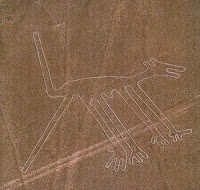 |
| The Dog |
On the ground, most of the lines are formed by a shallow trench with a depth between 10 and 15 cm (4 and 6 in). Such trenches were made by removing the reddish-brown iron oxide-coated pebbles that cover the surface of the Nazca Desert. When this gravel is removed, the light-colored clay earth which is exposed in the bottom of the trench produces lines which contrast sharply in color and tone with the surrounding land surface. This sublayer contains high amounts of limewhich, with the morning mist, hardens to form a protective layer that shields the lines from winds, thereby preventing erosion.
 |
| The Astronaut |
The Nazca "drew" several hundred simple but huge curvilinear animal and human figures by this technique. In total, the earthwork project is huge and complex: the area encompassing the lines is nearly 450 km2 (170 sq mi), and the largest figures can span nearly 1,200 ft (370 m). Some of the measurements for the figures conclude that the hummingbird is 93 m (310 ft) long, the condor is 134 m (440 ft), the monkey is 93 m (310 ft) by 58 m (190 ft), and the spider is 47 m (150 ft). The extremely dry, windless, and constant climate of the Nazca region has preserved the lines well. This desert is one of the driest on Earth and maintains a temperature around 25 °C all year round. The lack of wind has helped keep the lines uncovered and visible.
The discovery of two new small figures was announced in early 2011 by a Japanese team from Yamagata University. One of these resembles a human head and is dated to the early period of Nazca culture or earlier, and the other, undated, is an animal. In March 2012, the university announced a new research center would be opened at the site in September 2012 to study the area for the next 15 years. The team has been doing field work there since 2006 when it found about 100 newgeoglyphs.
 |
| The Tree ________________________________________________ |
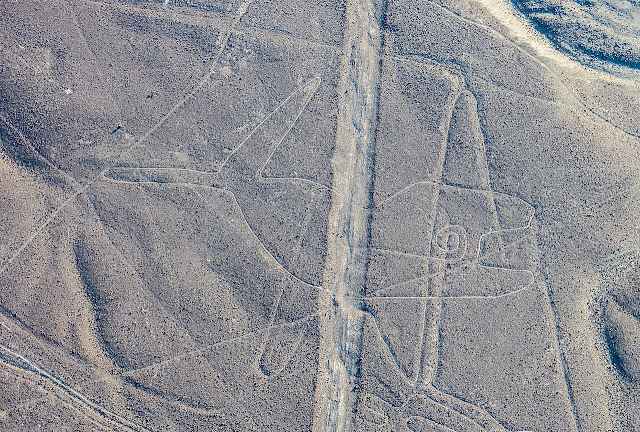 |
| The Whale ________________________________________________ |
 |
| The Hands ________________________________________________ |
 |
| The big riddle | Nazca lines ________________________________________________ |
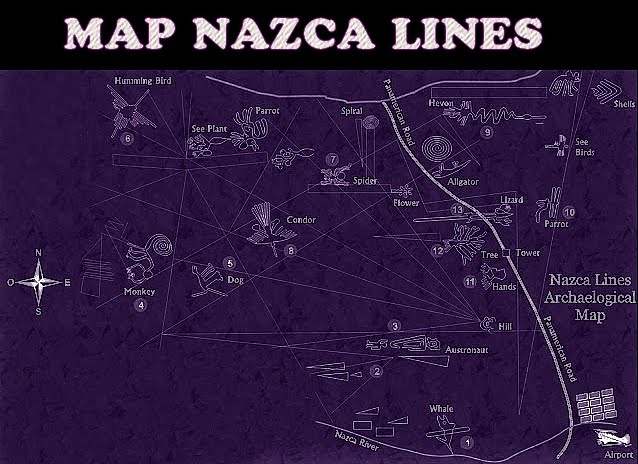 |
| The map nazca lines ________________________________________________ |

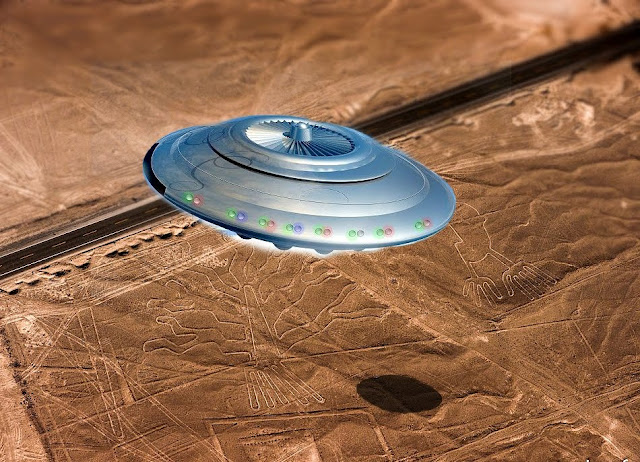










Post a Comment